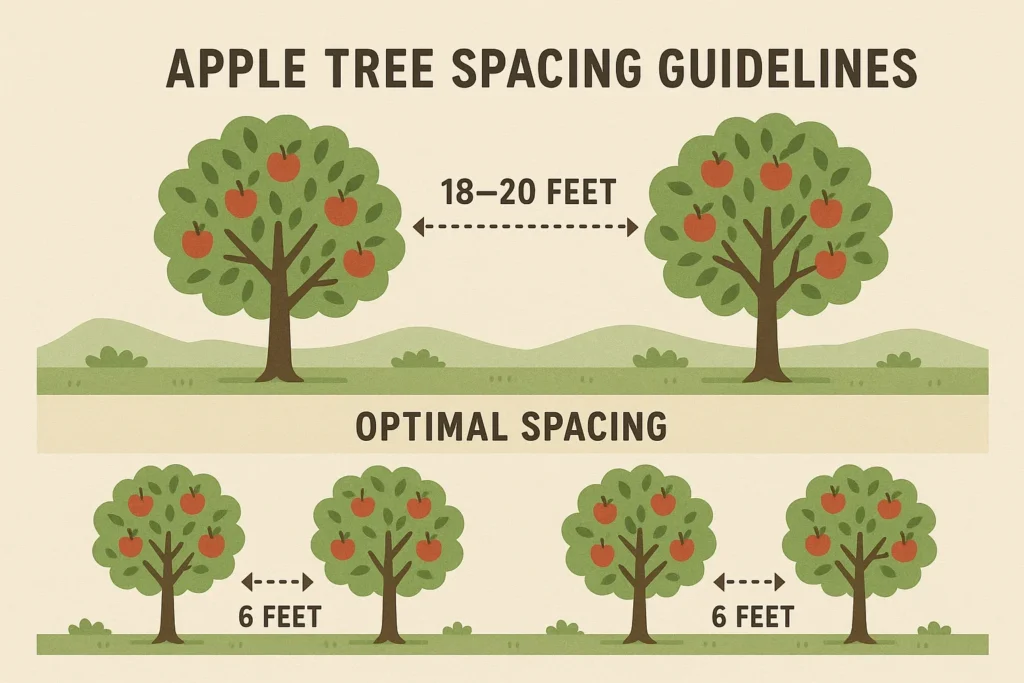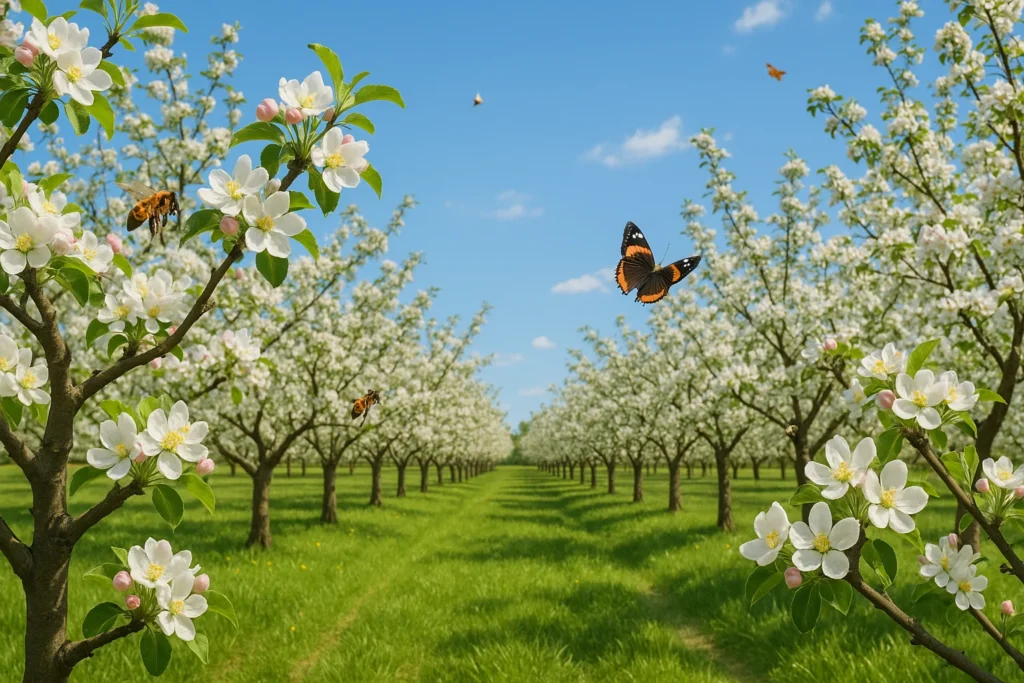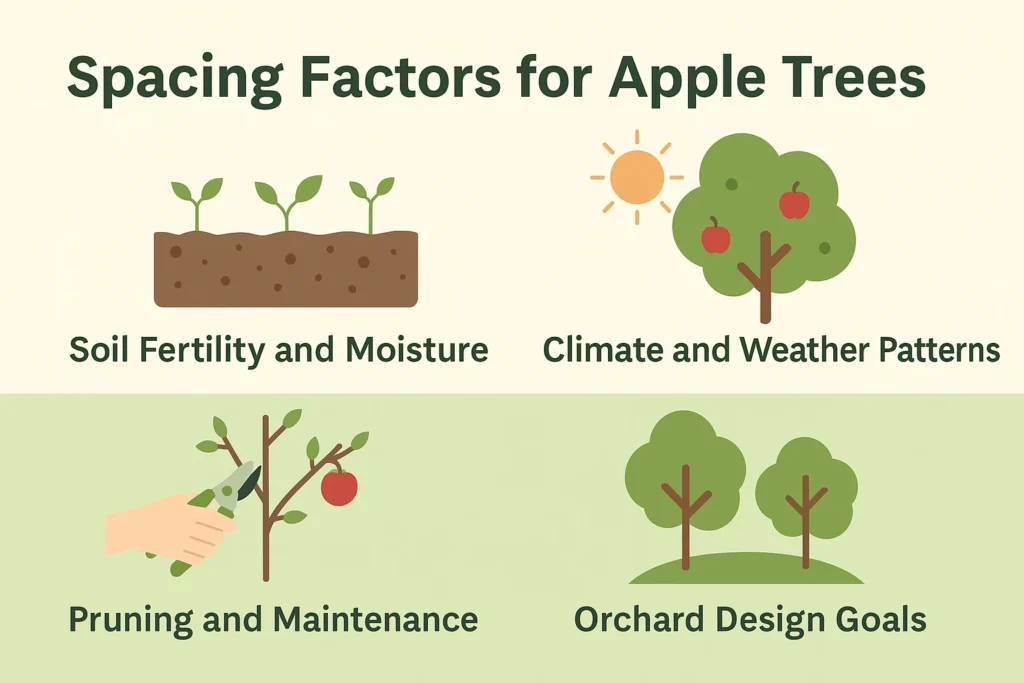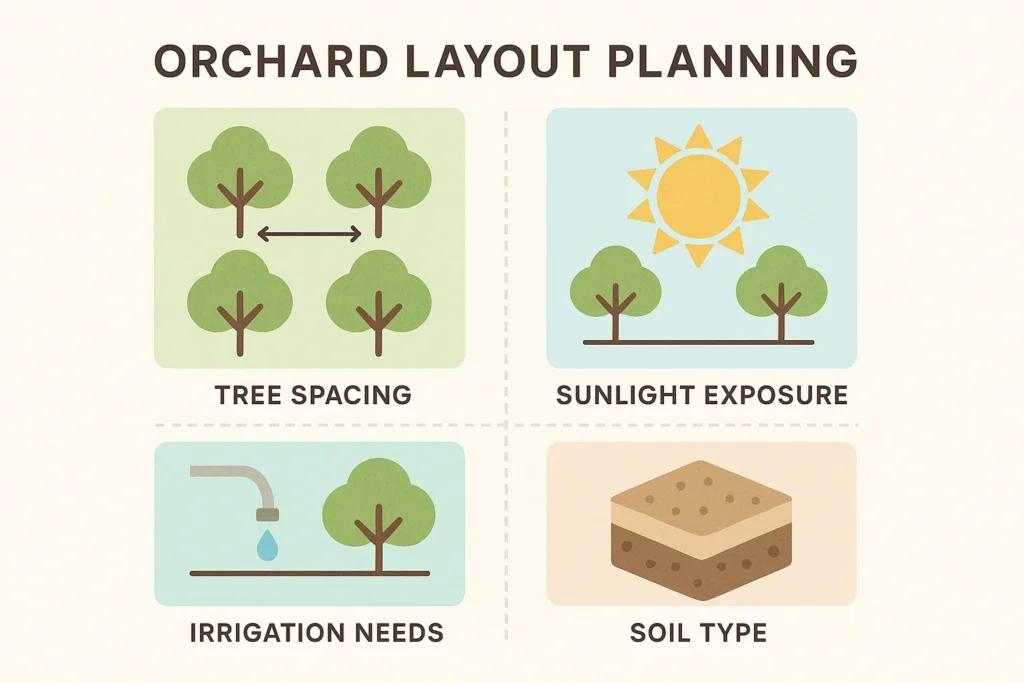How Far Apart to Plant Apple Trees: A Comprehensive Guide
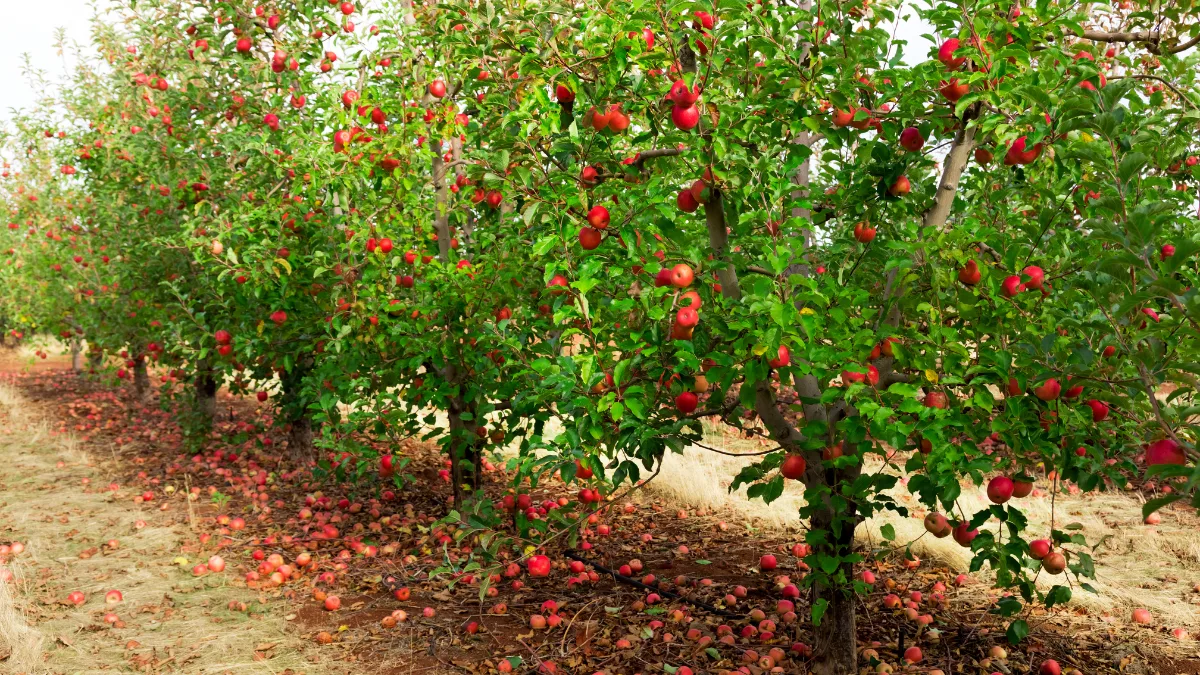
Apple trees should be spaced 10 to 25 feet apart depending on their size: dwarf trees need 8–10 feet, semi-dwarfs 12–15 feet, and standard trees 18–20 feet apart.
When considering how far apart to plant apple trees, the key factors include the specific type of apple tree, its rootstock, and your orchard goals. Generally, apple trees should be planted anywhere from 10 to 25 feet apart to ensure healthy growth, successful pollination, and manageable orchard maintenance. This guide will delve into the specifics of spacing for various apple tree varieties—such as honeycrisp, semi-dwarf, and standard trees—alongside other crucial considerations to optimize your planting strategy.
How Far Apart to Plant Apple Trees?
Apple tree spacing is a critical decision that determines how well your orchard will thrive. Typically, apple trees need to be planted 10 to 25 feet apart, depending on the tree type and the rootstock. Proper spacing is essential for the trees to receive ample sunlight, maintain good airflow, and allow the roots to establish without overcrowding.
The distance not only influences tree health but also impacts fruit production and the ease of maintenance in your orchard. Trees planted too close can lead to competition for resources such as nutrients and water, while also fostering conditions for diseases due to poor air circulation. On the other hand, overly wide spacing might reduce the overall yield of your orchard. Therefore, choosing the right spacing is a balancing act that significantly contributes to your orchard’s success. For more tips on optimizing your orchard’s productivity, check out our Crop & Farming section. Knowing how far apart to plant apple trees helps you avoid common mistakes that can impact their long-term health and productivity.
Use our apple tree spacing calculator to plan your orchard row-by-row and optimize fruit yield per square foot.
Different Apple Tree Varieties and Their Spacing
Spacing for apple trees varies significantly across different types and growth habits:
- Dwarf Apple Trees: These compact varieties are ideal for small spaces, needing only 8 to 10 feet apart. They’re perfect for high-density planting where air circulation and access for pollinators can still be maintained. If you’re considering other small tree options, explore more in our Tree & Forestry section.
- Semi-Dwarf Apple Trees: Requiring 12 to 15 feet between trees, semi-dwarfs are popular for backyard growers and small orchards. They balance a moderate size with manageable maintenance needs. Dive into maintaining semi-dwarfs with our Pruning and Maintenance Practices guide.
- Standard Apple Trees: These full-sized trees require the most room, usually 18 to 20 feet apart, to accommodate their extensive root systems and larger canopies.
- Honeycrisp Apple Trees: Known for their vigorous growth, honeycrisp trees require careful consideration. Spacing them similarly to standard trees, around 15 to 20 feet apart, often works best to manage their growth habit and ensure optimal fruit development.
Perfect for small gardens or raised beds. Requires careful pruning.
Great for home orchards, manageable size with good yields.
Needs more room, but provides long-term, low-maintenance growth.
Ideal for containers, patios, or narrow planting rows.
Properly understanding how far apart to plant apple trees makes a noticeable difference in airflow, sunlight access, and overall yield.
Spacing Considerations for Warm Climates (e.g., Florida)
Planting apple trees in warmer regions like Florida requires spacing adjustments to accommodate unique challenges:
- Higher humidity increases fungal risks → wider spacing improves airflow.
- Fast soil drainage and heat stress → avoid overcrowding to reduce competition.
- Compact soil types in subtropical areas → give roots more space to expand.
📍Tip: Aim for the upper end of spacing ranges (e.g., 10 ft+ for dwarf trees) in hot, humid zones.
🔗 Refer to your USDA Planting Zone before selecting apple tree varieties and spacing.
A well-planned orchard starts with knowing how far apart to plant apple trees based on their specific type and growth habit.
Spacing Guidelines for Different Apple Tree Types
Understanding the proper spacing for each apple tree type is crucial to prevent issues and ensure productive fruiting seasons.
Dwarf Varieties
For dwarf apple trees, the recommended spacing is around 8 to 10 feet apart. This compact spacing supports high-density planting and maximizes fruit production per area, especially beneficial where space is at a premium. By maintaining adequate airflow and sunlight penetration, disease risk is reduced, and overall tree vigor is enhanced. However, high-density setups require diligent thinning and pruning to prevent overcrowding. If you’re contemplating a high-density setup, consider reading our article on High Density Orchard Planting.
Semi-Dwarf Varieties
Semi-dwarf apple trees generally require 12 to 15 feet between each tree to provide ample growing space. In intensive orchards, however, some growers might opt for tighter spacing of around 6-8 feet, pushing the limits for high-density orchard layouts while sacrificing some maintenance ease. This approach, commonly discussed in various gardening forums, can boost production but requires keen management of resources and regular pruning to maintain tree health. Explore more about Crop & Grain Yield for insights on boosting production.
Standard Varieties
Standard apple trees, the giants of the apple world, thrive with 15 to 20 feet of spacing. This generous spacing allows for their substantial canopies and extensive roots to expand fully. The main advantage besides tree health is the reduced need for frequent pruning and maintenance. However, the larger space required might limit the number of trees you can plant in smaller orchards. For science-based planting advice, refer to the University of Minnesota Extension’s guide on apple tree spacing, which outlines ideal distances based on tree size and variety.
Spacing for Optimal Pollination
Proper tree spacing plays a pivotal role in ensuring successful cross-pollination among apple trees, crucial for fruit production. Apple trees rely on cross-pollination from compatible varieties which usually bloom simultaneously. By positioning apple trees at scientifically recommended distances, like 15 to 50 feet within groups, you enhance bee activity and improve fruit set rates. For more on pollination strategies, check our insights on When Do Apple Trees Blossom.
To increase pollination success, consider grouping compatible apple cultivars together to ensure pollen transfer. You’ll want to choose varieties that have overlapping bloom periods and keep their spacing close enough to ensure pollinators can easily travel between them.
While optimizing spacing for pollination, balance is key. Allow enough room for pollinators, such as bees, to access flowers easily while maintaining sufficient separation to reduce disease spread and ensure ample air and sunlight for tree health. One of the most important first steps is determining how far apart to plant apple trees to support healthy root development and canopy spread.
Factors Influencing Apple Tree Spacing
Several factors can influence how far apart you decide to plant your apple trees:
- Soil Fertility and Moisture: Better soil conditions might allow closer spacing due to improved nutrient availability, while poorer soils might necessitate wider spacing to minimize competition for resources. Discover more about optimizing soil conditions with our Soil Fertilizer Calculator.
- Climate and Weather Patterns: Regional climate can affect growth rates and disease prevalence, requiring spacing adjustments to optimize tree health and production.
- Pruning and Maintenance Practices: Regular pruning supports more compact spacing by controlling tree size and improving air circulation.
- Orchard Design Goals: Whether aiming for a scenic orchard or maximizing production through high-density plantation, your design choice will significantly drive spacing decisions.
Planning Your Orchard: High Density vs. Traditional Planting
When planning your orchard, choosing between high-density and traditional planting setups is crucial. High-density planting—with trees often spaced as close as 1 to 2 feet in-row for semi-dwarf varieties—enables a swift return on investment with increased fruit yield. This setup however demands intensive management, frequent pruning, and precise nutrient application.
In contrast, traditional planting offers ease of maintenance and low-impact care. Standard trees spaced widely deliver stable yields without the complexity of high-density arrangements. Decision-making should weigh factors like available space, desired yield, and your management capacity (time, labor, resources).
Ultimately, your choice should align with your orchard’s capacity and your personal gardening ambitions, whether you lean towards the simplicity and longevity of traditional setups or the intense yet rewarding high-density style.
FAQ
Q: How far apart should semi-dwarf apple trees be planted?
A: Semi-dwarf apple trees should be planted 12 to 15 feet apart for optimal health. In high-density orchards, they can be planted as close as 6–8 feet with intensive care.
Q: Can I plant apple trees 4 feet apart?
A: It’s possible in extreme high-density systems, but not recommended for most gardeners. Pruning and spacing are critical to avoid overcrowding and disease.
Q: What is the best time to plant apple trees in warm climates?
A: In warm areas like Florida, fall planting (September–November) is ideal. This allows roots to establish before summer heat. Spring (March–May) is also fine if watering is consistent.
Q: Do apple trees need pollination spacing?
A: Yes. For best pollination, plant compatible apple tree varieties within 15 to 50 feet of each other to support bee activity and fruit set.

